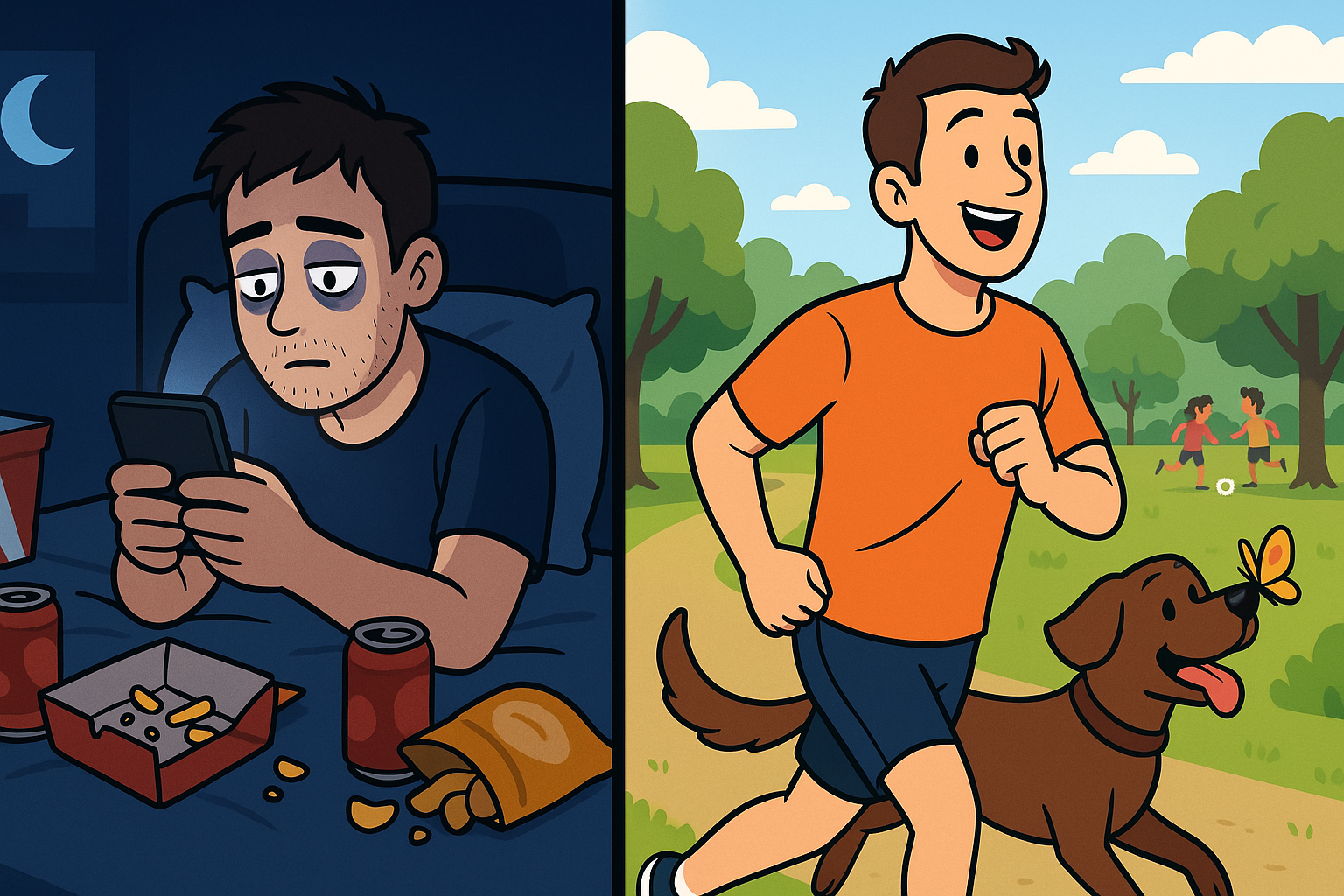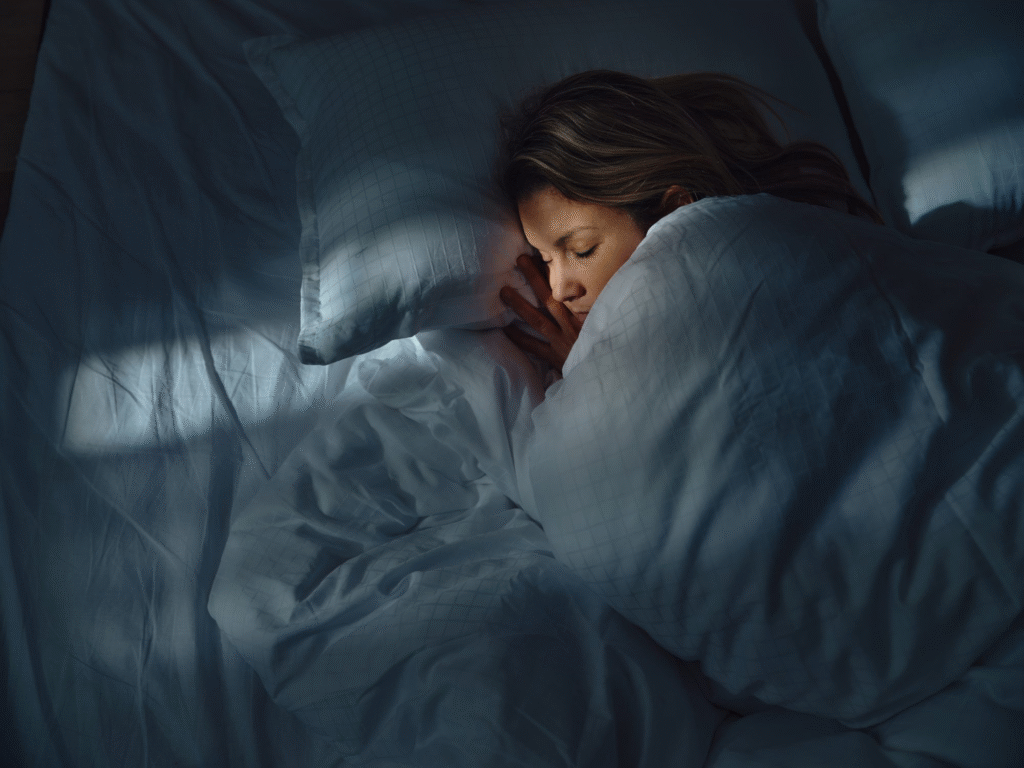Physical Address
304 North Cardinal St.
Dorchester Center, MA 02124
Physical Address
304 North Cardinal St.
Dorchester Center, MA 02124

Have you ever thought that you’re always running after the next pleasure hit—whether it’s mindlessly scrolling social media, mindless binge-watching TV shows, or unnecessarily munching? Same. That incessant overstimulation made me exhausted, unfocused, and strangely hollow. That’s when I found something that honestly shook up my whole world: a dopamine detox. It’s not some eek-inducing, sciency procedure—it’s really just like resetting your brain. I attempted it out of interest, but what I received was a complete change in the way I think, feel, and live.
Follow me as we go through the actual deal—what detoxification is, how I implemented it in my life, and 10 powerful ways it assisted me in detoxifying my mind, purifying my habits, and living in the quiet.
The first lesson I had to learn was how many times I was going after spikes of pleasure chemicals without even knowing it. Dopamine, the pleasure molecule, gets released when we devour junk food, scroll through TikTok, or even glance at our notifications. It’s not inherently bad—it’s part of the reward system of our brain—but I was definitely using too much of it. I began detoxing by eliminating all those tiny digital highs. For a whole weekend, I didn’t log into social media, didn’t watch Netflix, and kept my phone on airplane mode. The quiet was deafening initially. But it made me realize how dependent I’d grown on stimulation. That was the start of my process.

I used to begin each morning with coffee, social media, and some kind of noise. Throughout the cleansing, I replaced that chaos with basic rituals—drinking water, stretching, and writing. Cutting back on stimulants such as caffeine and sugar broke me of that rollercoaster of highs and crashes. You don’t know how much these tiny habits hijack your concentration until you attempt a cleanse. Within days, I was feeling calmer, more centered, and a heck of a lot less anxious. My body was literally rewarding me for moving slower.

I’ll admit it—I hated exercising. But during the process, I needed to replace my sources of pleasure. So I challenged myself to 20 minutes of walking or stretching every day. Initially, it was like a task. But then I observed how my mood improved after a walk. Exercise isn’t just endorphin-boosting—it really does regulate chemicals in a healthy, sustainable manner. Movement is my new daily medicine now. No expensive gym memberships needed—just intent and consistency.

One of the greatest eye-openers was the way my sleeping patterns were disrupting my chemical cycle. Blue screens, late nights, incessant scrolling—I was priming myself for burnout and crankiness. In my detox, I vowed to get to bed earlier than 11 PM and rise at approximately 7 AM. I also severed screens an hour prior to bedtime and began reading a book instead. In one week, I was a new person. Deeper sleep = improved brain function. And improved brain function = improved balance of neurotransmitters. It was the simplest life hack I didn’t know I needed.

Meditation had always appeared dull to me. But detoxing from dopamine left me needing stillness. I began with only 5 minutes a day of breath work. I then incorporated light yoga stretches and gratitude journaling. All of these mindfulness practices quieted my mind and brought an end to the need for continuous stimulation. The greatest part? I started to actually enjoy simply doing nothing. No scrolling, snacking, or distracting is involved. Just be. That alone was worth every moment of the process.

It turns out food has a huge impact on our chemical levels. While undergoing the process, I reduced sugar, fried foods, and processed snacks. I substituted them with more fruits, vegetables, nuts, and lean proteins. I wasn’t looking to be perfect—just more conscious. Tyrosine-rich foods (such as eggs, fish, and avocados) naturally increase the production of dopamine. This type of clean eating functioned like a gentle detox cleanse, nourishing my brain chemistry from the inside out. And the bonus—I had fewer cravings and more energy.

I didn’t only cut down on screen time—I rearranged how I engaged with technology. I relocated all my social media apps from my home screen, disabled notifications, and imposed screen-time limits. It wasn’t quitting cold turkey—it was becoming intentional. I discovered that technology is not the enemy; it’s our interaction with it that is crucial. By detoxing from constant scrolling, I made room for actual connections, creative pursuits, and moments of calm that I didn’t even realize I was lacking.

You know what’s wild? I had forgotten that I enjoyed drawing, cooking, and reading novels. All that got covered up by instant hits of dopamine from screens. When I detoxed, I began incorporating those hobbies again into my life. Doing creative things provided a more profound, richer sense of pleasure, not the fast-food kind of chemical. It was as if my brain was healing, rewiring, and awakening. That’s the loveliness of this process—you don’t miss pleasure, you simply find it in better ways.

One of the biggest surprises from this experience? Nature. Simply taking a walk outside in the park, breathing in the wind, or gazing at the sunset became strong mood chasers. Nature doesn’t hit your brain with artificial rewards—it softens it instead. I took it upon myself to go outside every day, even if it was just for 10 minutes. It allowed me to refresh, recharge, and connect with something greater than myself. Nature ended up being the most overlooked component of my dopamine detox arsenal.

Let’s face it: change is difficult. And detoxing from habits that are loaded with dopamine isn’t always easy. I had days where I failed, where I gave in to YouTube holes or reached for my phone in the morning. What kept me going was catching up with a friend who was doing the same. We checked in, shared updates, and reminded ourselves why we began. If you’re seriously struggling, therapy or coaching is a game-changer as well. This process is not about perfection—it’s about awareness, intention, and support.
Completing a dopamine detox was not easy, but it was 100% worth it. I didn’t just feel more relaxed and concentrated—I felt more myself. It’s crazy how much we unconsciously depend on ongoing stimulation just to make it through the day. But once I took a step back, I discovered freedom in quiet, joy in simplicity, and clarity in the stillness. If you’ve been feeling addicted, overwhelmed, or just. off—this could be your cue to give a detox a try as well. Begin small, keep an eye open, and allow your brain some much-needed rest. Trust me—it works.
I hope you liked this article. If yes, do let me know in the comments. Let me know if there is a topic you want me to write about in detail.
Thanks for reading, and I will see you in the next one.
1. What is dopamine detox in plain language?
It’s taking a break from stimulating activities such as social media, junk food, or binge-watching to allow your brain to reset its chemical levels.
2. How long does a chemical detox need to be?
It depends! You can do it for a few hours or an entire weekend. Some people incorporate it into their weekly routine for long-term gains.
3. Is a dopamine detox like a detox cleanse?
Not really. A detox cleanse typically means diet, whereas a chemical detox involves lessening overstimulation in the mind and online.
4. May I still use my phone while doing a detox?
Yes, but purposefully. The idea is not to engage in mindless scrolling or relentless chemical-releasing apps.
5. Does detox actually work for mental health?
Yes, definitely. Lots of folks (myself included) feel better focused, less anxious, and more controlled after a detox.
Share your details, and we will get back to you shortly!
This will close in 0 seconds
Share your details, and we will get back to you shortly!
This will close in 0 seconds